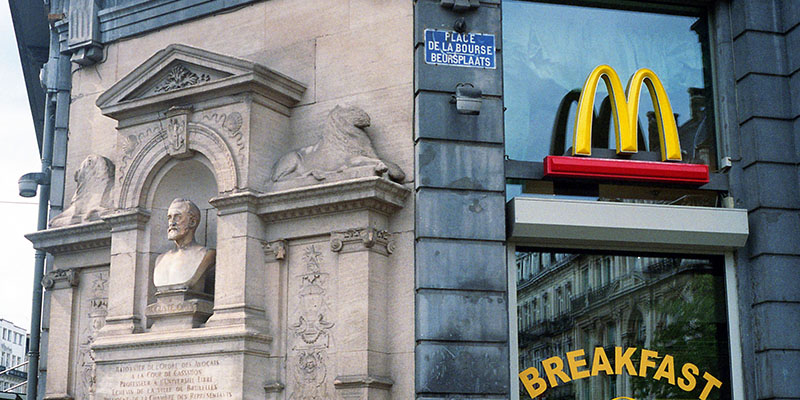In today's fast-paced and complex business environment, organizations face numerous challenges in managing their processes efficiently and effectively. From streamlining operations to improving productivity, successful process management is crucial for achieving optimal results and maintaining a competitive edge. This article explores the art of effective process management, highlighting the importance of clarity, structure, continuous improvement, technology, and culture in navigating the path from chaos to success.
Understanding the Power of Process Management
Process management involves designing, implementing, and optimizing a series of interconnected activities to achieve specific business goals. By focusing on process excellence, organizations can enhance customer satisfaction, reduce costs, increase efficiency, and drive innovation. It provides a framework for aligning resources, people, and technology to deliver consistent and reliable outcomes.
Toyota, a renowned automobile manufacturer, implemented the Toyota Production System (TPS) which revolutionized process management in the automotive industry. TPS focused on eliminating waste, improving quality, and enhancing efficiency through standardized processes and continuous improvement.

Gaining Clarity through Process Mapping
A fundamental step in effective process management is gaining clarity through process mapping. This involves visualizing and documenting the sequence of activities, decision points, and interactions within a process. Process maps provide a clear understanding of how work flows, identify bottlenecks, and enable stakeholders to identify areas for improvement. They serve as valuable communication tools, fostering collaboration and shared understanding among team members.
General Electric (GE) used process mapping to optimize its hiring process. By visualizing and documenting the recruitment steps, GE identified areas of redundancy, streamlined the process, and reduced the time-to-hire while ensuring a consistent candidate experience.

Implementing Structure and Standardization
Process management brings structure and standardization to an organization's workflows. It establishes clear roles, responsibilities, and guidelines for executing tasks, reducing ambiguity and improving accountability. Standardized processes promote consistency and quality, minimizing errors and rework. They also facilitate knowledge transfer, enabling seamless transitions and empowering employees to deliver their best work.
McDonald's, the global fast-food chain, is renowned for its strict adherence to standardized processes. From food preparation to customer service, McDonald's ensures consistent quality and efficiency across its thousands of locations worldwide by implementing standardized processes and procedures.

Continuous Improvement and Agile Mindset
Embracing a culture of continuous improvement is essential for effective process management. Organizations must adopt an agile mindset, constantly seeking ways to optimize processes and adapt to evolving market dynamics. This involves regularly reviewing performance metrics, gathering feedback, and implementing changes to enhance efficiency, quality, and customer satisfaction. By fostering a culture of innovation and learning, organizations can stay ahead of the competition and drive sustainable growth.
Amazon, the e-commerce giant, is known for its relentless pursuit of continuous improvement. Through its "Kaizen" philosophy, Amazon empowers employees at all levels to identify and implement process improvements, leading to enhanced efficiency, shorter delivery times, and improved customer satisfaction.

Leveraging Technology as an Enabler
In today's digital era, technology plays a vital role in enabling effective process management. Organizations can leverage automation, data analytics, and workflow management systems to streamline operations, improve decision-making, and drive real-time insights. By harnessing the power of technology, businesses can eliminate manual tasks, reduce human errors, and enhance overall process efficiency. However, it is important to note that technology should serve as an enabler and not as a replacement for human judgment and creativity.
IBM, a technology and consulting company, leveraged technology to enhance its procurement process. By implementing an automated procurement system that integrated supplier management, purchase orders, and invoicing, IBM streamlined its procurement operations, reduced manual errors, and achieved cost savings.

Empowering Employees and Building a Process-Oriented Culture
Successful process management requires the active involvement and empowerment of employees. Organizations should provide training, tools, and resources to help employees understand and contribute to the improvement of processes. By fostering a process-oriented culture, where employees are encouraged to challenge the status quo and propose innovative ideas, organizations can unlock the full potential of their workforce. Employee engagement and involvement lead to a sense of ownership and accountability, driving continuous improvement and fostering a culture of excellence.
Zappos, the online shoe and clothing retailer, built a strong process-oriented culture by empowering employees to provide exceptional customer service. Zappos encourages employees to take ownership of the customer experience and empowers them to make decisions to ensure customer satisfaction, leading to loyal customers and a strong brand reputation.

Unilever, a global consumer goods company, implemented a process management initiative to streamline its supply chain. By mapping and optimizing processes from procurement to distribution, Unilever achieved significant cost savings, reduced lead times, improved inventory management, and enhanced collaboration with suppliers.

These examples illustrate how various organizations across industries have applied the principles of effective process management to drive efficiency, enhance customer satisfaction, and achieve business success. By learning from these real-world cases, businesses can gain valuable insights and inspiration for their own process management initiatives.
Conclusion:
In a world of increasing complexity and rapid change, effective process management is the key to navigating from chaos to clarity. By gaining a deep understanding of processes, implementing structure and standardization, fostering continuous improvement, leveraging technology, empowering employees, and building a process-oriented culture, organizations can optimize their operations, enhance customer satisfaction, and achieve sustainable growth.
Embracing the art of effective process management is a strategic imperative for any organization looking to thrive in today's dynamic business landscape. By investing in process excellence, organizations can transform chaos into clarity, achieving efficiency, effectiveness, and a competitive advantage in the market.



